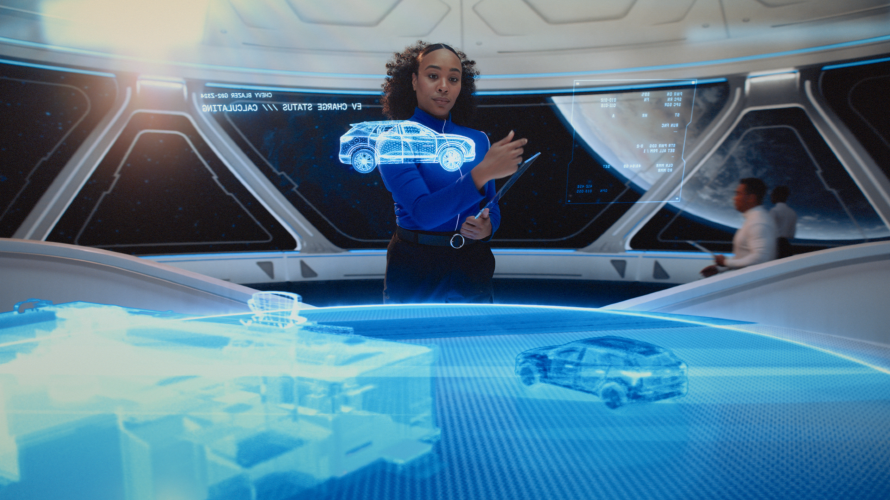World-building creative lab Impossible Objects (IO) recently shared a behind the scenes look into the new campaign for GM’s OnStar service using the same real-time technology as Hollywood shows like “The Mandalorian.” The :45 ad was created using Unreal Engine from pre-vis through post, Disguise for playback, captured in the state-of-the-art LED volume at NantStudios. See how the virtual production contributed to the creation of this new futuristic campaign. Building The OnStar
“Campbell Ewald and General Motors partnering with our team to produce “The OnStar,” using all the hallmarks of virtual production, marks a special moment for us here at Impossible Objects,” said Joe Sill, Founder/Creative Director. “This campaign demonstrates how we can bring an ambitious visual concept to life more quickly and efficiently with real time tools, and a team of creative and technical experts who know how to navigate this new production realm.”
With the new tagline “Better Never Stops,” the spot highlights the expanded tech capabilities of OnStar’s offerings, including safety, connectivity, and entertainment. An automotive-focused project like this would have typically had minimal touch points across the various necessary departments that create car commercials. By approaching this campaign as a virtual production, it fostered a unique creative space for everyone to collaborate throughout the shoot. Car commercials typically require multiple locations and vehicles, road closures, permits, and weather contingencies. The ability to incorporate all of these elements without ever leaving the LED volume enabled greater efficiency, developed an intimate creative process, and produced an inspired final product.
The campaign was shot over four days, with scenes ranging from the bridge of a spaceship, to driving over a city bridge, and down forest and coastal roads—all captured in the volume. Once one scene was finished, the team could quickly change the digital environments playing out on LED walls and foreground set pieces to “move” to the next location. “Working the way we do, we can use the same digital environments we create for the pre-visualization in Unreal Engine, and build upon them throughout the production. This allows us to remain consistent and saves budget on the back end,” said Mark Allen, Virtual Production Supervisor.






















